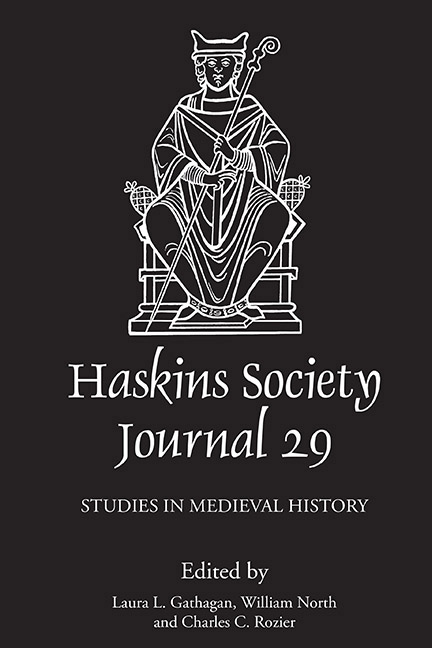Book contents
- Frontmatter
- Contents
- List of Figures and Tables
- Editors’ Note
- Abbreviations
- 1 The Longue Durée of a Symbolic System: Mounted Warriors and Horses in the Chronicon Salernitanum
- 2 Revolution(s) of Writing: Northern France, Tenth–Fourteenth Centuries
- 3 Slave or Free: The Aehtemann in Anglo-Saxon Rural Society
- 4 Norman Ducal Property in the Tenth and Eleventh Centuries: A Spatial and Chronological Analysis
- 5 The Codex Wintoniensis in its Twelfth-Century Context
- 6 The Carmen Ceccanense: A Neglected Source for the End of the Norman Kingdom of Sicily, Introduction – Edition – Translation
- 7 Succession and Interregnum in the English Polity: The Case of 1141
- 8 Crusading Participation in Normandy and its Borderlands: The Evidence from the Old French Traditions of the First Crusade
- 9 The Domesday Controversy: A Review and a New Interpretation
4 - Norman Ducal Property in the Tenth and Eleventh Centuries: A Spatial and Chronological Analysis
Published online by Cambridge University Press: 15 October 2019
- Frontmatter
- Contents
- List of Figures and Tables
- Editors’ Note
- Abbreviations
- 1 The Longue Durée of a Symbolic System: Mounted Warriors and Horses in the Chronicon Salernitanum
- 2 Revolution(s) of Writing: Northern France, Tenth–Fourteenth Centuries
- 3 Slave or Free: The Aehtemann in Anglo-Saxon Rural Society
- 4 Norman Ducal Property in the Tenth and Eleventh Centuries: A Spatial and Chronological Analysis
- 5 The Codex Wintoniensis in its Twelfth-Century Context
- 6 The Carmen Ceccanense: A Neglected Source for the End of the Norman Kingdom of Sicily, Introduction – Edition – Translation
- 7 Succession and Interregnum in the English Polity: The Case of 1141
- 8 Crusading Participation in Normandy and its Borderlands: The Evidence from the Old French Traditions of the First Crusade
- 9 The Domesday Controversy: A Review and a New Interpretation
Summary
Land tenure is central to our understanding of the Middle Ages, a period in which one's wealth, lordship, and political power were intrinsically linked to, and often determined by, the extent and spread of one's property. Chris Wickham showed this to be the case for royal power and royal demesne in West Francia and Wessex in the long tenth century. As the West Frankish royal demesne shrank, royal authority disintegrated and West Francia became politically fragmented. Around the same time, the West Saxons, who were able to augment their demesne through conquest, went on to unify England under their hegemony. Of course, the relationship between power and property is fairly obvious and can be observed elsewhere. This article explores some aspects of this relationship in Normandy by examining the scope and distribution of ducal property in the tenth and eleventh centuries.
Norman ducal property has received little scholarly attention. Over seventy years ago, Lucien Musset commented on the desirability of a comprehensive survey of ‘le domaine ducal’ in Normandy. His comments were later echoed by David Bates and Mark Hagger, who also noted the lack of a thorough study of the ducal estates. Recently, some attempts have been made to address this surprising lacuna in the Norman historiography. In an article published in 2012, Hagger looked at ducal power and land in the Cotentin, and produced maps and an appendix of ducal estates in Normandy's westernmost region. The Norman frontier has been the subject of several important studies; however, their focus means that estates throughout Normandy, notably in the political core, are left largely untouched.
In this article, all the known ducal estates in the period c. 911–1087 are surveyed and arranged on maps. Other historians, such as Bates and Hagger, have mapped ducal estates, but they have not exploited the potential of geographic information system (GIS) technology which allows for sophisticated data manipulation and nuanced analysis. Not only is it possible to pinpoint the location of individual estates, but by plotting estates by reign, the maps presented and analysed in this article reveal, for the first time, the size and scope of the dukes’ landed base and how that evolved chronologically.
- Type
- Chapter
- Information
- The Haskins Society Journal 292017. Studies in Medieval History, pp. 81 - 114Publisher: Boydell & BrewerPrint publication year: 2018
- 1
- Cited by



